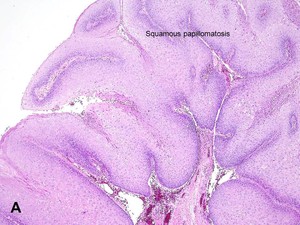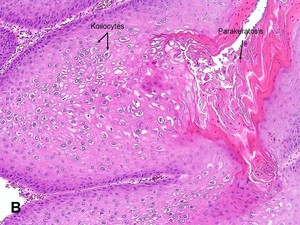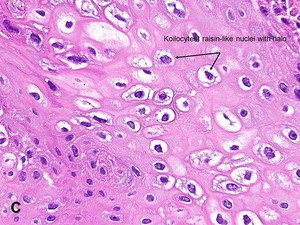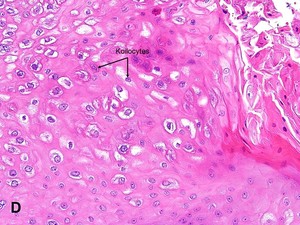Attention: Restrictions on use of AUA, AUAER, and UCF content in third party applications, including artificial intelligence technologies, such as large language models and generative AI.
You are prohibited from using or uploading content you accessed through this website into external applications, bots, software, or websites, including those using artificial intelligence technologies and infrastructure, including deep learning, machine learning and large language models and generative AI.
Condyloma Acuminatum
- Etiologic agent: Human papilloma virus.
- Clinical features: typically a disease of young adults; most cases are sexually transmitted; presence in children suspects child abuse.
- Incidence: involves ~5% of men in 20s to 40s.
- Incubation period: variable, ranging from weeks to months to years.
- Gross features: flat, warty, papillary or cauliflower-like lesions usually on glans or penile meatus, but may be seen on scrotum, and perineum as well as perianal region.
- Histology:
- Papillomatosis, hyperkeratosis (thickened keratin layer), parakeratosis (keratin layer with pyknotic nuclei) and koilocytes (raisinoid cells within a clear "halo") are characteristic features (image A), (image B), (image C) & (image D).
- Penile condylomas are usually cytologically benign, although treatment with podophyllin or lasers may cause marked cytologic atypia – a history of prior treatment is therefore always appreciated.
- Viral strains 6 and 11 are common in typical condyloma without dysplasia, while strains 16, 18, 31 and 33 are more common in the dysplastic forms of condyloma.
- Prognosis and treatment: may spontaneously regress (50%); recurrence is common; otherwise treat with podophyllin or laser.
advertisement
advertisement




